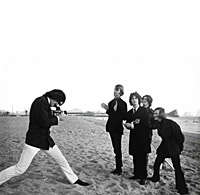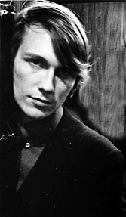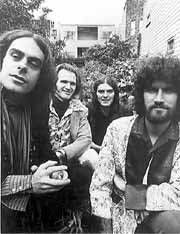|
Formed in 1966, the Sopwith Camel was the second San Francisco band to be signed by a major record company -- right after Jefferson Airplane and before the Grateful Dead. They might also have been the first San Francisco group to break up, disbanding after only one album and a "wildly commercial" single "Hello, Hello."
PETER KRAEMER AND TERRY MACNEIL Terry had been a graphics student at the San Francisco Art
Institute. He'd learned to play piano and classical guitar somewhere along the way and had
been working in groups since he was sixteen. Peter was originally from the ghost town of
Virginia City, Nevada (well, not quite a ghost town -- Peter's father was a mining
engineer, and there were 350 or so people living in the area.) Peter's parents had an
active interest in the Arts, he recalls. "My mother owned an art gallery, and was an
artist herself. Virginia City in the early forties was an artists' community like Taos,
New Mexico is now, only smaller. Salvador Dali once chased a bird through our house. We
lived in a 15-room brewery; I was raised around bars, poker tables and wood stoves."Peter
came to San Francisco many times during his youth. "In some ways, Virginia City is a
suburb of San Francisco. A lot of the money in the city came originally from Virginia City
mining." He finally emigrated to San Norman had been playing in high school bands in the Midwest, "when white middle America was into Elvis, the Everly Brothers and Bill Doggett." His grandfather was a highly-reputed farmer who was often called to lecture on innovations like crop rotation. Norman's grandfather, he notes with some pride, holds two other honors: he grew the Holstein cow currently stuffed and exhibited at the Chicago Museum of Science and Industry, and he was the inventor of a particularly ingenious device for clearing animal "wastes" from dairy barns. 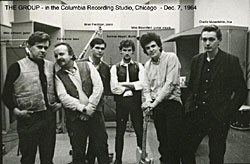
The Group . . . broke up and Norman returned to Hawaii. Then back to the States, where he discovered San Francisco, communes, Ken Kesey and the Merry Pranksters. He worked and played, in an empty theatre next to a Chinese laundry near Hyde and Sacramento Street until Peter and Terry found him. MARTIN BEARD Martin, who adds British charisma to the group, was born in London. His father is a professional musician, currently bassist with the San Francisco Symphony. The family emigrated to San Francisco in 1956. After attending Galileo High School, Martin worked as an insurance management trainee for six months. "They gave me a choice. I could resign or I could be fired and collect two weeks pay. I took the money."
"I wanted to form a band, and decided to place an ad in the paper. My
father called it in for me. Well, you've got to know that in England, they say 'full stop'
instead of 'period'. The guy at the paper took it down as he was told. So the ad came out,
'Bass player. Full stop. Needs work. Full stop.' Norman found that intriguing. Coney Island 1966 |
The band was together and it was time to choose a name. Peter just happened to have one available. "A while earlier, I had been living at Chet Helms' house. He had a band that he was trying to launch, and we all came up with names for it. My idea was Sopwith Camel. Everybody laughed at me; they thought it was trite and dumb. Their band was finally named Big Brother and the Holding Company. Ours became the Sopwith Camel." Because the Camel shared the same label and producer (and similar
musical tastes) with the Lovin' Spoonful, most people thought they were from New York.
Their friends in San Francisco groups "accused us of being sellouts. That's absurd; back
in those days, we were all looking for hits. It's just that ours was the first." The
Camel's big return to San Francisco met with disaster. "We were headlining over the
Airplane and the Dead. The Dead did one of their long, long sets, and by the time we were
on, we were only able to do three tunes before the cops pulled the plugs before curfew. We
took it to be a sign of some sort." Before that, the Camel had toured the country, appearing with the Rascals, the Rolling Stones, the Who and, of course, the Lovin' Spoonful. They even wrote and performed a couple of commercials for Levis. But finally inner frustrations disbanded the group; there wasn't even time to record an album to capitalize on "Hello, Hello." It wasn't until several months later that they got together in the studio and assembled enough tracks for an album before finally going separate ways. Martin and Norman were the only current Camels to continue earning a living through music. Peter starved, living on unemployment and whatever else he could manage to come up with. Terry took his wife and travelled with his guru to India and then came back to wait tables and paint signs in Hawaii -- though he did, along the line, write music for a play, "The World We Live In," that was produced with some success at the Mountain Theatre in Marin County. Martin played in a number of
local bands, continuing to work steadily with no particular fame. Norman did studio work
for producer Jacobsen, most notably appearing on Norman Greenbaum's "Spirit in the Sky" --
the largest-selling single in William Sievers changed his name to William Truckaway, recorded a solo album for Warners and currently runs a recording studio/rehearsal hall in Sausalito, keeping in close and constant touch with the rest of the group. THE SOPWITH CAMEL REFORMS The reformation of the Sopwith Camel began two years ago. The Burger King franchise operation wanted to use "Hello, Hello" as a commercial jingle, so they contacted Eric Jacobsen, who in turn telephoned Kraemer. "There was a lot of money in it," Peter tells us. "I'd get half and Terry'd get half. We let them have the song and I joined Terry in Hawaii with the money. We spent it, all, in a matter of weeks." Peter and Terry decided to return to songwriting, and to even form a band. "We came back to San Francisco, determined to get the best musicians we could hire, rather than the shiftless slobs we had before. We auditioned everybody we could find. Well, as it turned out, Marty and Norman had been working continuously since the band breakup, and they'd gotten really good. The best in fact, that we found. So here we are, together again." 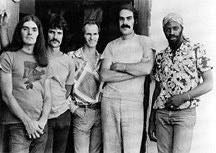
Toward the end of recording the Camel's debut WB album, they took on a new member, Jimmy Stringfellow. Doubling on horns, keyboards and guitar, Jimmy started playing piano at the age of six, and later studied composition and arranging at the Berklee jazz conservatory and Buffalo University. Jimmy was playing in a band on the same bill with the Camel when discovered by the group. "We weren't really looking for anyone," says Peter, "just waiting. What we were waiting for manifested itself sooner than we had expected when we found Jimmy. We were always hoping to get a really good, trained musician in the band." And again the Sopwith Camel? "When he heard that we'd gotten together again, the manager of It's a Beautiful Day came up to me," recounts Peter. "He said, 'I hope you're not going to drag out that old name; it's beating a dead horse.' "We took that as a challenge." The Miraculous Hump Returns from the Moon is an album of original songs and unique jazzy-sounding rock and roll, and as befits a reunited group, the album is distinctly evolutionary. --August 1973
|
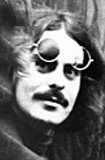
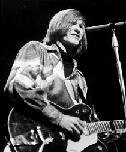
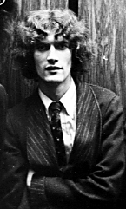 Francisco "to go to a good school."After several
false starts, Terry and Peter found guitarist William Sievers and drummer Norman Mayell.
"Willy had a good guitar and a big amp," recalls Terry, "and Norman had the Big Beat."
Francisco "to go to a good school."After several
false starts, Terry and Peter found guitarist William Sievers and drummer Norman Mayell.
"Willy had a good guitar and a big amp," recalls Terry, "and Norman had the Big Beat."
